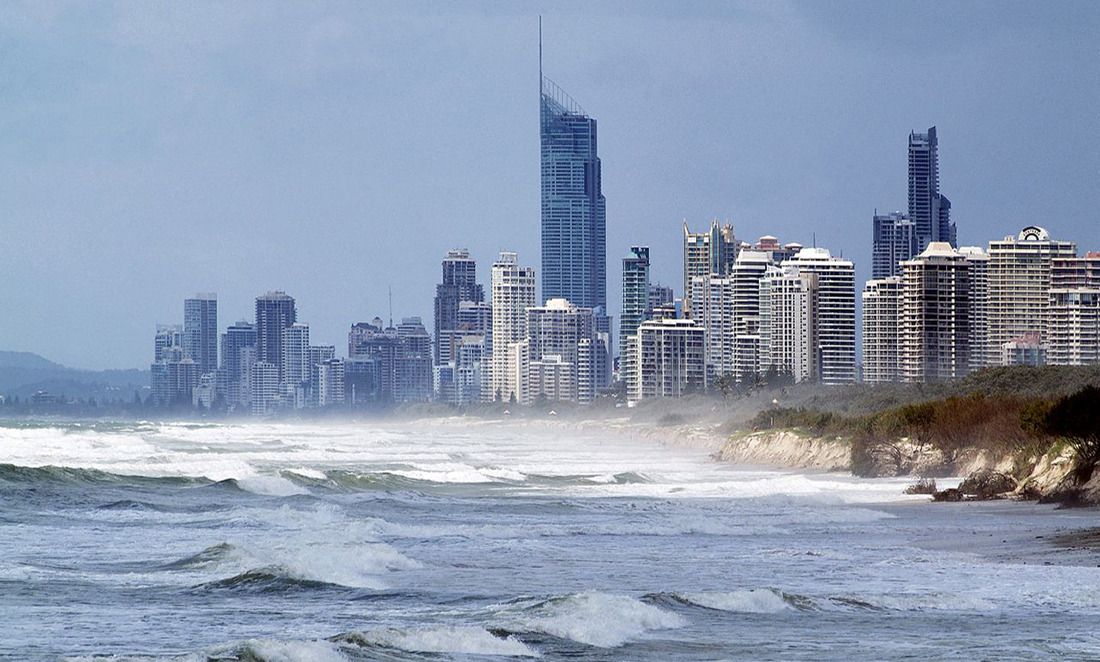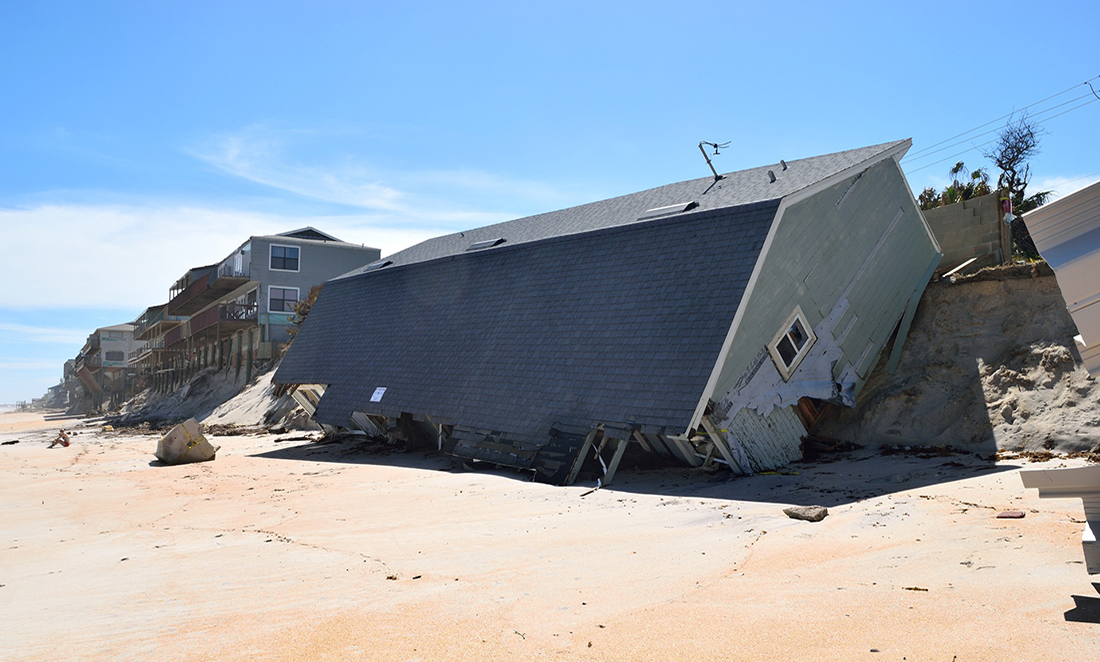Insurance companies get a bad rap.
But when natural disasters strike, an insurance payout can be the lifeline that allows victims to recuperate.
Insurance exists to dilute risk. It allows the cost of accidents to be shared by many, instead of lumped on a few. Everyone contributes a little to generate a large pool. If you are lucky, you’ll never have to claim from this pool. But in the event of any misfortune, insurance provides protection from the full cost of disaster.
Historically, this has been a good thing for society.
And now, insurance may get the chance to shine once again. A report published yesterday by The Geneva Association, the leading international think tank of the insurance industry, suggests that this much maligned sector could provide the kick in the butt we need to deal with climate change.
JUDGING COVER BY THE BOOKS
Insurance is (theoretically) a simple balancing act.
The aim of the game is to earn more money from premiums and investments (of said premiums) than is paid out in losses, while still offering rates that people can afford.
Companies calculate policy rates by studying statistics of past claims and estimating the likelihood that any one person will claim on their policy in the next year.
Factors such as where you live and how vulnerable your locale is to natural disasters like flooding or fire affect these calculations. The necessary geographic data is typically sourced from local councils—if they can afford it—and helps catastrophe modellers calculate just how much money insurance companies are set to lose in the event of a natural disaster.
The more accurately they can predict this figure, the better off insurance companies will be.
If they overestimate risk, premiums will be too high, they won’t earn as much profit and their risk will be higher in the future. If they underestimate the potential risk of natural disasters, insurance companies will lose money from too many payouts.

It’s a fine line that they walk, but they’ve got risk management strategies of their own in place. A whole industry exists to insure insurance companies. It’s called reinsurance, and it exists to spread the risk of paying out massive claims between many insurance companies.
HARDER, WETTER, FASTER, STRONGER
Insurance is obviously a numbers game. But is the industry’s number up?
With the size and frequency of natural disasters ever escalating as a result of climate change, data that has previously been used to calculate risk goes further and further out the window.
A 2016 ClimateWise report found that frequency of weather-related catastrophes around the world has increased sixfold since the 1950s. This trend is predicted to continue onwards and upwards.

And with growing populations, more dense cities and more valuable economies, we humans have more to lose. The Mott MacDonald development and engineering consultancy estimates that, within 20 years, US$200 billion in investments will be needed each year to cover losses from impacts of the climate.
So how can anyone make accurate predictions when it feels like each year brings record-breaking weather conditions?
If policy premiums are calculated by looking at data from past claims, without factoring in the predictions of climate change, their numbers aren’t going to add up.
Increasingly unreliable weather events might render insurance companies unaware and underprepared.
When they can’t accurately predict how much money they are likely to lose, they can’t reinsure themselves to an appropriate level and they could lose a lot of money. Some companies will go into liquidation. Some will massively hike up premiums. Both spell bad news for society.
WHEN IT RAINS
For some people, a raise in premiums can make insurance simply unaffordable.
Cruelly, these people who cannot spare money for an insurance policy are often those who live in places that are more vulnerable to environmental damage.
A report from the Insurance Australia Group shows that communities with limited economic resources often exist in places that are more exposed to natural perils.

The elevated premiums associated with living in a high-risk area mean that many cannot afford insurance. And when a natural disaster does occur, these communities typically don’t have the resources available to adequately recuperate.
When local communities cannot afford insurance and cannot fend for themselves, they need the government to swoop in to help.
GETTING THE GOVERNMENT INVOLVED
The Great Perth Hailstorm of 2010 was WA’s most expensive natural disaster to date. Premier Colin Barnett utilised state and federal disaster relief funding to help the recovery process when insurance companies found themselves inundated with claims.
In the wake of all these record-breaking disasters around the world, some governments have developed funds which deal solely with the toll of natural disasters.
The National Flood Insurance Program was formed in the US in 1968 after Hurricane Betsy became the most destructive and costly storm in Louisiana history.
For a while, it seemed a success, with the fund taking in more in premiums than it paid out in claims.
Of course, Hurricane Katrina revealed the fund to be only a fair-weather friend when the cyclone catapulted New Orleans into torrential turmoil in 2005.
Katrina alone was enough to drain the fund of all the premiums it had collected between 1991 and 2005. Nearly $18 billion was paid out to victims—a small help in the grand scheme of the $108 billion catastrophe.
Then there were Sandy, Wilma, Irma and Hermine and a slew of major floods.
The government, unable to assess the real risk of flooding, is now about $24 billion in the red.
And who picks up that tab? The taxpayers, naturally.
Governments cannot continue to incur the costs of natural disasters. The Natural Disaster Fund of the government-backed Earthquake Commission in New Zealand was all but exhausted by the series of earthquakes that occurred near Christchurch between 2010 and 2012. To this date, many people are still waiting on payouts from that event.
What will happen when the next long-overdue earthquake finally devastates the small country?
DON’T WAIT, MITIGATE
The threat of climate change to insurance is not a recently discovered problem.
One of the world’s largest companies, the Munich Reinsurance Group, first suggested that climate change would be an issue all the way back in 1973.
In yesterday’s report from The Geneva Association, Secretary General Anna Maria D’Hulster stated,
“The study has confirmed that climate change is a topic that has made it's way up to the boardrooms of the insurance industry, although insurers are neither the polluters nor the policy setters.”
Despite this, the industry has been slow to evolve.
Only in the last few years have some insurance companies begun to divest assets away from fossil fuels. It makes a whole bunch of sense. Why would they want to support the practices that are making the catastrophes costlier and threatening their sustainability in the first place?
This sort of mitigation is the most economical way of dealing with the impacts of climate change. If you’re producing less greenhouse gases, you’re causing less damage and have to fork out less to recover, right? Estimates suggest that, for every $1 spent on mitigation, we can save $10 in recovery costs.
Of course, natural disasters will still strike. For these areas at risk, looking at the cost of recovery is the wrong conversation to be having. Perhaps we should be counting up the cost of adaptation instead.
ADAPT AND OVERCOME
Levees, floodways and structural elevation of buildings are just a few of the adaptive measure that can reduce the impact natural disasters have on communities and the subsequent insurance claims.
Unfortunately, the question being asked is not how quickly can we build these damn dams but who is going to pay for it all?
Should it be the taxpayers? The government?
Or is there a chance here for insurers to accelerate some change?
In the same way that safe drivers are offered lower premiums, individuals who lower their risk and adapt to the threat of future catastrophes could be rewarded the same way.
Suncorp is leading an admirable charge in this space. Utilising research from James Cook University’s Cyclone Testing Station, they’re offering reduced premiums to eligible customers who strengthen their homes against the effects of cyclones.
There may be other options down this avenue. What would happen if insurance companies offered lower premiums to people who installed solar panels on their properties, supporting the move away from fossil fuels?
Perhaps that seems like a poor business model. Because if a customer’s risk is higher, they can charge more for premiums, right?
But if catastrophes continue to occur (which they will) and premiums continue to rise (highly likely), then just like the fossil fuels causing all these problems, the insurance industry as it exists today will be unsustainable.
The Geneva Association report states that the insurance industry is contributing significantly to building socioeconomic resilience to climate change, though several hurdles prevent them from going all in. For one, there’s not enough accessible, comprehensive data on the risks we face. Additionally, there may be a lack of incentive to take up insurance due to post-disaster government aid.
Dr Maryam Golnaraghi, Director of The Geneva Association’s Extreme Events and Climate Risk research programme, commented “failure to address climate change has been identified as one of the highest potential socioeconomic risks to society. Building resilience to climate change requires proactive risk management and adaptation strategies, and transitioning to a low-carbon economy needs to align governments and the private sector. The insurance industry plays a crucial role in building resilience and fostering economic and entrepreneurial pathways that address climate change.”
As much as we like to rip into insurance companies, we need them. They allow us to go about our day-to-day life with some level of security that we’ll be looked after should disaster strike.
But we need insurance to be widespread throughout society for it to work. When only the rich can afford premiums, the inherent nature of insurance existing to dilute risks becomes dead in the water.
And now with climate change to contend with, we have to come to terms with the fact that our nation’s most vulnerable communities could be left high and dry at the very next disaster. Unless we make a change now.








